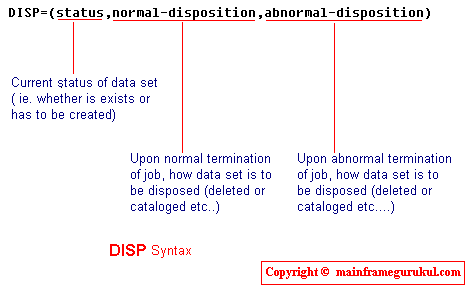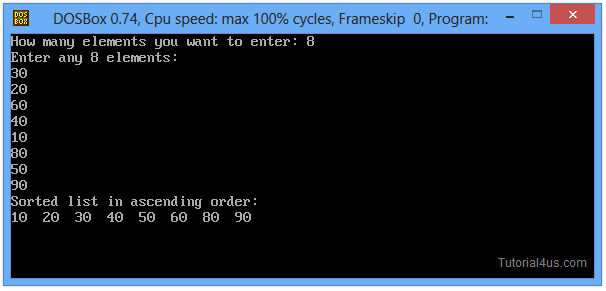

- #SORTING AN ARRAY IN COBOL PROGRAM HOW TO#
- #SORTING AN ARRAY IN COBOL PROGRAM CODE#
- #SORTING AN ARRAY IN COBOL PROGRAM SERIES#
It sorts a table area of unknown length and undefined content with specifications passed in linkage. This can be done as below: PERFORM VARYING I FROM 1 BY 1 UNTIL I ) 30 This implementation is written to be used as an internal subprogram.
#SORTING AN ARRAY IN COBOL PROGRAM CODE#
In this case we can not code as below because table items can not be initialized without using indexes or subscripts. Subject and Marks needs to be wiped out and Student name should be there. If we want to initialize the lower table data only, i.e. INITIALIZE verb can be used on the top level item which replaces all the Alphanumeric items with spaces and Numeric items with zeroes. A200-DISPLAY-DATA.ĭISPLAY 'STUDENT NAME - ' WW-STUDENT-NAME(I)ĭISPLAY 'MARKS OBTAINED - ' WW-MARKS(I,J)

We can not use after with the above example. I think Microfocus COBOL supports a COBOL SORT of a table (array) in addition to standard COBOL sorts of files defined with SD's (i.e., RELEASE. Depending on your O/S and/or compiler, SORT is a callable service. Instead of Using two perform statements, this can be achieved in a single Perform statement by usng an AFTER verb. The first array(WS- A) can occur from 1 to 1.
#SORTING AN ARRAY IN COBOL PROGRAM SERIES#
For example, a series of totals in the working storage with the. array and file sorting, advanced array structures, VSAM (ESDS, KSDS. PERFORM VARYING J FROM 1 BY 1 UNTIL J ) 6ĭISPLAY 'MARKS-OBTAINED - ' WW-MARKS(I,J). An array is used to store similar items or elements. Cobol Programming II is designed to develop advanced programming skills and. PERFORM VARYING I FROM 1 BY 1 UNTIL I ) 30 Sample code:In this sample code, first I becomes 1 and for each value of I, J iterates 6 times thus for each student 6 Subjects & marks gets displayed. Sorting a php array of arrays by custom order PHP sort multidimensional array with custom order Sort array of arrays by a column with custom sorting priority (not alpha. 01 WW-STUDENT-MARKS.ĭeclaration can be done as shown above, but while accessing the data in two dimensional arrays care must be taken.For example if I want to display all the Students along with the subjects and Marks, how this can be achieved. If I want an array of Students with their marks in each subject.Say there are 30 students in a class and 6 Subjects. But more dimensions needs more care while accessing it. WS-WEEK-DAY(1) can be used to access the first day of the week array. This is Single dimensional Array where it can be accesses using either index or Subscript.


#SORTING AN ARRAY IN COBOL PROGRAM HOW TO#
Let us see how to declare and process multi dimensional arrays in COBOL.Īs we know, Array is nothing but the set of similar data elements stored together. But more than two dimension array creates confusion.So in general two dimensional arrays and Single dimensional arrays are used mostly. If an attempt is made to use x(j+1), a compiler error of the form “ error: ‘x’ requires one subscript” will occur.Multi dimensional arrays in COBOL are supported and it is possible to have up to 7 dimensions which is its MAX limit. The only difference is that instead of writing x(j+1), a variable, jp2, has to hold the value of j+1. Perform varying j from 1 by 1 until j is greater than jp1 Perform varying i from 1 by 1 until i is greater than n The perform statements take the place of Bubblesort’s usual for loops. The bubblesort just uses a normal Bubblesort algorithm. The final portion of code includes three “subprograms” to perform the Bubblesort, print the array, and finish the program. The first part of the actual workings of the program, prompts the user for the filename, and reads the data into the array x. working-storage section.ħ7 temp pic s9(14)v9(4) usage is computational-3.Ġ2 x pic s9(14)v9(4) usage is computational-3 The next section is the working-storage, which includes a bunch of variables for calculations, the input-value used to store the data as it is read from file, and the array x, where the data is ultimately stored. Select input-file assign to dynamic fname-inp The filename given by the user will be stored in fname-inp. The first piece of code below sets up the environment, and the information for the input file. Below is a Cobol program which prompts the user for the name of a file containing real numbers, and sorts them. How easy is it to do a Bubblesort in Cobol? Not that challenging.


 0 kommentar(er)
0 kommentar(er)
